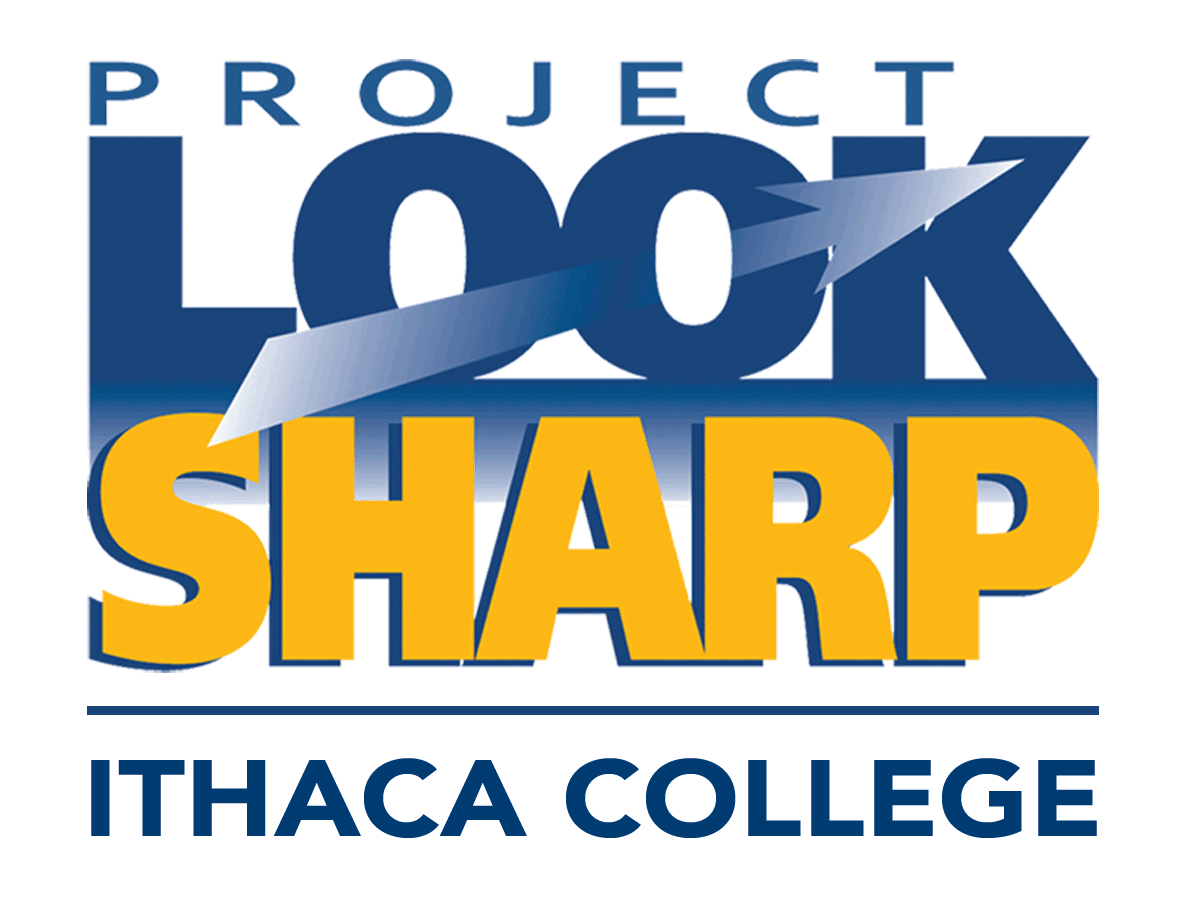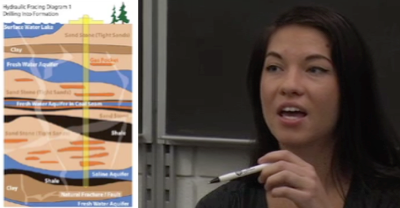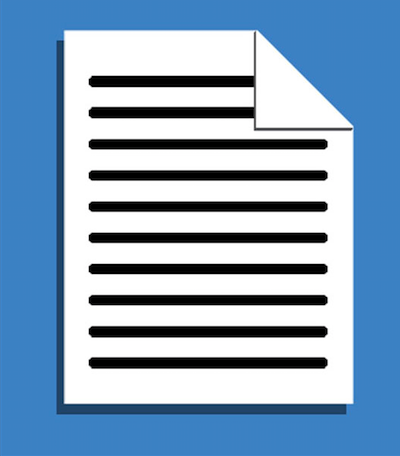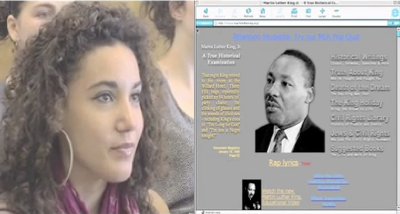Your Search Results (101) sorted by newest
What Do We Do About Fake News?
In this media literacy activity students analyze three online articles for messages about the responsibility to ascertain credibility in news stories.
30-60 Minutes
What Do You Know? Sourcing, Credibility and Bias
Media literacy and critical thinking lesson reflecting on sourcing, credibility, accuracy and bias of information presented in the media while introducing students to vocabulary and issues addressed in Media Constructions of Sustainability lessons.
This lesson is part of a "kit" or collection of media decoding lessons on a particular topic. You can explore that kit using the link below:
Kit: Media Constructions of Sustainability: Food, Water, and Agriculture
30-60 Minutes
What’s in My Lunchbox?
In this media literacy activity students analyze a book cover, a lunchbox, a YouTube screen grab and a webpage for messages about eating fruits and vegetables.
15-30 Minutes
When to Call a Lie a Lie – Media’s Responsibility to Hold Politicians Accountable
In this media literacy activity students analyze an article and a video news commentary from liberal and conservative media sources for messages about how the media responds to lies told by President Trump.
30-60 Minutes
Who's in Power in Congress: How Do You Know?
This is a media literacy and critical thinking activity in which students analyze four charts and text about who holds power in Congress for messages about credibility in media sources.
30-60 Minutes
YouTube Recommendations: What Do I Do?
In this media literacy activity students analyze results from a YouTube recommendations list for messages about how to select videos based on the likelihood of their offering credible information.
15-30 Minutes
YouTube Recommendations: Who’s Steering Your View?
In this media literacy activity students analyze three online articles for messages about the impact of YouTube recommendations on viewers.
30-60 Minutes
“The Truth About Coronavirus” - Google Searching For COVID-19
In this media literacy activity students analyze results from two Google searches, one for “coronavirus” and one for “the real truth about coronavirus,” to reflect on the impact of search terms on the sources that Google recommends.
15-30 Minutes
College Level: Hydrofracking, Media and Credibility
Related to kit: Media Constructions of Sustainability: Fingerlakes
This 9 minute annotated video demonstrates constructivist media decoding using the lesson "Exploring the Impact of Hydrofracking on Aquifers," where college students analyze pro and anti-fracking diagrams.
View
Constructivist Media Decoding
Critical Thinking And The News
Assessing Credibility & Bias
Document Selection
Question Design
Social Studies
Science And Environment
Credibility, Information and Science
Designed for secondary science and environmental studies teachers, this 2 hour to full day workshop will explore the role of the internet and other media on our students understanding of information.
View
Constructivist Media Decoding
Media Literacy Lesson Design
Assessing Credibility & Bias
Science And Environment
Where Media Literacy Meets Sustainability Education
Related to kit: Media Constructions of Sustainability: Fingerlakes
The webinar offers educators and teachers-in-training pedagogical techniques and curriculum materials to support constructivist media decoding to help students engage in critical thinking about the complex environmental, economic and social systems that underly sustainability.
View
Constructivist Media Decoding
Assessing Credibility & Bias
Science And Environment
RX For an Infodemic: Media Decoding, COVID-19, and Online Teaching
After describing the historical, political and social causes of our viral age of “fake news,” this article explore how constructivist media decoding provides a methodology for addressing the polarization of truth, with examples of how this work can be done in the classroom through face-to-face and virtual learning.
Download
Social Studies
English Language Arts
Checking the Facts: Media Literacy and Democracy
By integrating the process of critical questioning of media messages into the everyday classroom curriculum, we can help produce a citizenry with the skills needed to negotiate future threats to truth.
High School English: Examining Credibility and Bias in Web Sites
Related to kit: Media Constructions of Martin Luther King, Jr.
An example of leading a class through a constructivist media decoding using a lesson from our kit, Media Constructions of Martin Luther King Jr. Students analyze the white supremacist website martinlutherking.org and reflect on critical thinking and the internet.
View
Constructivist Media Decoding
Media Violence And Conflict Resolution
Critical Thinking And The News
Assessing Credibility & Bias
Reflecting Diversity
Do No Harm
Document Selection
Social Studies
English Language Arts
Key Questions To Ask When Producing Media Messages
Graphic display of media production questions related to audience & authorship, messages & meanings, and representations & reality.
Download
Media Literacy Lesson Design
Assessing Credibility & Bias
Question Design
Lesson Conception
Key Questions to Ask When Analyzing Media Messages
Graphic display of questions related to audience & authorship, messages & meanings and representations & reality.
Download
Constructivist Media Decoding
Assessing Credibility & Bias
Question Design
Lesson Elements
Lesson Conception
Critical Thinking & the News
Democracy requires an educated and literate citizenship. This 2-hour workshop provides guidelines and strategies for training our students to consistently assess the credibility, accuracy, and bias of various news sources.
View
Constructivist Media Decoding
Critical Thinking And The News
Assessing Credibility & Bias
Social Studies
Secondary Social Studies Integration with Curriculum Kits
This training will provide content and materials that enable teachers to reach both high achieving and traditionally disengaged students through use of Project Look Sharp curriculum materials that teach core social studies content and skills. The workshop will cover classroom decoding methods using key concepts and questions for media analysis, teaching 21st century critical thinking skills (e.g. identifying sourcing, credibility, and bias), and issues of copyright, accessing media documents, and assessment.
View
Constructivist Media Decoding
Media Literacy Lesson Design
Critical Thinking And The News
Assessing Credibility & Bias
Fair Use Copyright Law
Document Selection
Question Design
Lesson Elements
Lesson Conception
Social Studies
1988 Dukakis Packaging Commercial
Media literacy and critical thinking activity analyzing a commercial from the 1988 Dukakis campaign for messages about image construction in presidential campaigns.
This lesson is part of a "kit" or collection of media decoding lessons on a particular topic. You can explore that kit using the link below:
Unit: 1984-1992 Mass Marketing the ImageKit: Media Constructions of Presidential Campaigns
15-30 Minutes
2008 Is Obama a Muslim? Sources & Credibility
Media literacy and critical thinking lesson decoding an email, blog post, newspaper story and website articles for messages about whether Barack Obama is a Muslim, sourcing and credibility.
This lesson is part of a "kit" or collection of media decoding lessons on a particular topic. You can explore that kit using the link below:
Playlist: News Accuracy and CredibilityPlaylist: English Language Arts
Unit: 2000-2008 Targeting the Spin
Kit: Media Constructions of Presidential Campaigns
Over 60 Minutes




.png)

.png)








